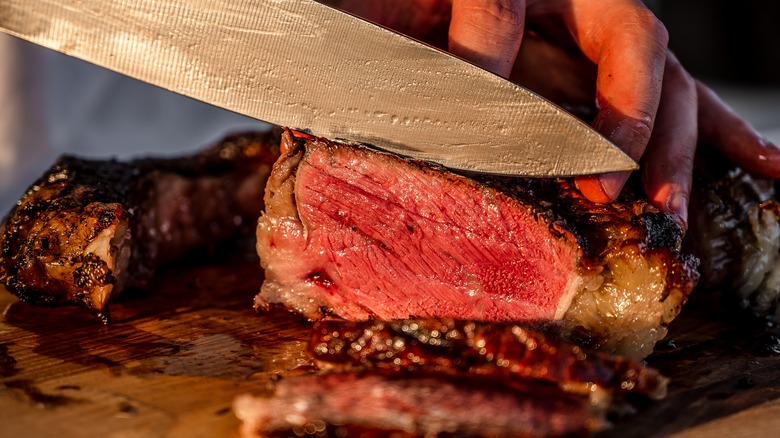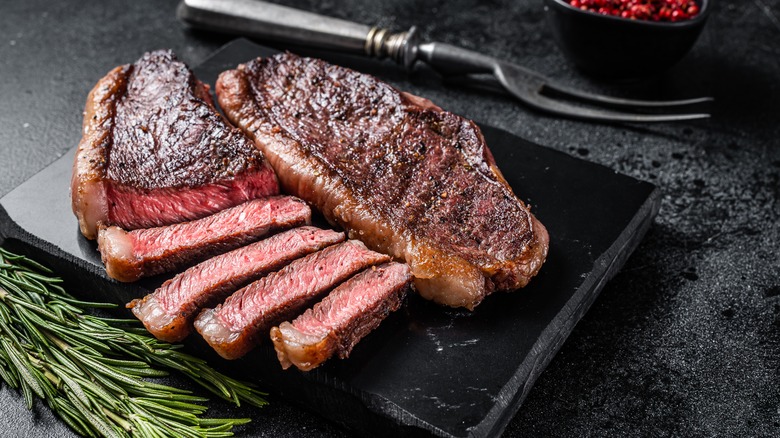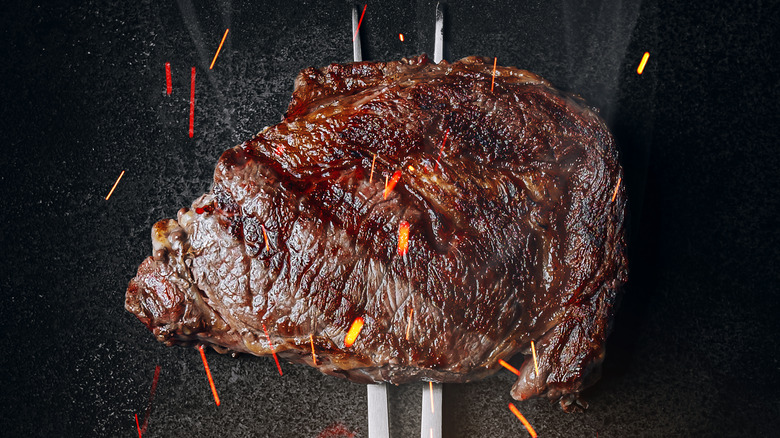Why You Should Cook Thick Steak With Low Heat
There is an art to cooking a perfectly done steak. Unfortunately, it's an art form that many have trouble perfecting. For some, steaks always seem to either be overcooked on the outside or undercooked in the middle. For true steak lovers, there are few things sadder than seeing a beautiful slab of beef turned to char or left far short of proper doneness.
Thankfully, it doesn't have to be that way. Grilling the perfect steak is not some form of magic. It's a skill that anyone can obtain with a bit of knowledge, attention to detail, and practice.
According to the USDA, we consume, on average, 26 billion pounds of delicious red meat each year. Undoubtedly a large portion of this is cooked as steak. Our hope is that every ounce of these delicious hunks of beef will be cooked appropriately and enjoyed to the last bite.
Let's fire up the grill and get started.
Scientific tips for picking steak
While we think of cooking as an art form, the truth of the matter is that there's more science involved than you might believe. According to Smithsonian Magazine, great steaks begin with understanding how farmers produce meat.
According to the article, grain-fed cattle that spend their final days on a feedlot have a higher concentration of oleic acid in their muscle tissue than grass-fed cows. This fatty acid is closely associated with a positive eating experience. In contrast, free-range beef is higher in omega-3 fatty acids, which can cause the meat to have a gamy or fishy taste.
Which is the best in terms of flavor depends on your preferences. If you like meat with a more robust natural flavor, steaks from grass-fed cattle might be more to your liking. Then again, if you prefer milder-tasting beef, then grain-fed steaks will be more to your taste.
Another factor Smithsonian points out about picking a steak is that marbling is key. The more fat trapped inside the muscle tissue, the more flavor the steak will deliver and the tenderer it will be. That is why Kobe beef is so delicious.
Use low heat for thick steaks
Smithsonian also goes into some detail about the science behind cooking steaks of different types and thicknesses. Thin slices of beef are easy to cook. If you are cooking a breakfast steak, high heat is the ticket. After all, if you do much more than give it a good sear, it's going to turn to leather.
As the steaks get thicker though things change. You try and cook a two-inch slab at the same temperature, and you are likely to end up with a charred piece of meat that is raw in the middle.
As the meat gets thicker, it takes more time for the heat to penetrate the center of the cut. Because of this, you need to reduce the heat of your cooking surface to slow the rate of how the outside cooks. The thicker the slice, the slower it needs to be cooked.
Just remember, thick meat, low heat — but always be sure the center of your steak reaches the FoodSafety.gov recommended internal temperature of 145 degrees.


